The Streets of a Small Town in County Tipperary.
In this letter we look at the usefulness of Commercial Directories in Ireland of the 1800s. These directories listed the owners of various establishments in given years across the towns and cities of Ireland. I hope you enjoy this example using the ancestral links of just one of our readers.
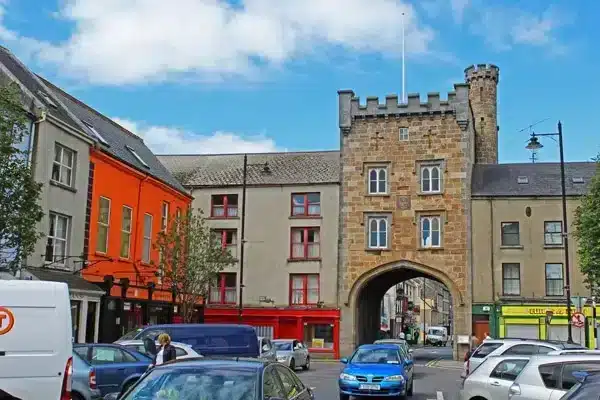
Have you ever tried to track down the “life and times” of one of your Irish ancestors? I can be a fascinating (and sometimes frustrating) process as you put the pieces together and gradually gain a glimpse of what life was like at the time for those ancestors.
I notice that many of us stick with the standard records (birth, marriage, death and census) as we build up a research picture. However, this week I would like to illustrate just how useful some other record sources can be. In this case, we have an opportunity to examine some commercial directories for a small town in Ireland in the 1800s – and see how one family came to dominate much of the commerce of that town.
So, in today’s letter we cover the story of one Irish family who left a small town in County Tipperary in the late 1800s – bound for the gold-fields in a country far away. I would like to introduce you to Julianne Cotter Fletcher. She will tell the story of her Tipperary ancestors and I’ll have a conversation as we go along:
Julianne: My name is Julianne Fletcher née Cotter and I live in Melbourne, Australia. I have been tracing my family tree for about 5 years. I am totally addicted to the fun of researching and trying to fit names and dates together like a jigsaw puzzle! I am so keen on trying to piece together my paternal family tree, both sides of which are from Ireland.
Mike: Very nice to meet you Julianne! My own great-grandmother was also a Cotter from County Cork – there could be a bit of shared blood between us!
Julianne: The Irish ancestors I am interested in are James Chadwick and Catherine Morris, a married couple who are my paternal great great grandparents. Their daughter, Adelaide, was my great-grandmother who married Samuel Kingston in 1908 and had my grandmother Jane in 1909 in Melbourne. Jane went on to marry Patrick Cotter from Dunbullogue, Cork and their youngest John is my Dad!
Mike: Chadwick is a very interesting surname. It came from England originally, but the largest presence is to be found in north Tipperary to this day. Adelaide is also a very interesting and rare first name (maybe not in Australia!) – so that should make the search a little more productive.
Julianne: I believe James and Catherine are both from Tipperary as “FindMyPast” baptism records I have seen are from that region. My Nana always said that her mother was from Borrisoleigh in Tipperary.
Mike: Indeed, the Chadwicks were always a big presence in Borrisoleigh – so that does make sense.
Julianne: I think James was baptised in 1826 and Catherine in 1839 in the parish of Loughmore in Tipperary. They married in 1858 in Loughmore. He died in 1905 in Ballarat, Victoria, Australia and she died in 1898 in Richmond, Victoria, Australia – I think they were estranged at that point.
Mike: OK. In Ireland, the tradition is that a couple marries in the parish of the bride. In this case it is most likely that Catherine came from the Roman Catholic parish of Loughmore BUT James came from the RC parish of Borrisoleigh. I did some searching and uncovered a James Chadwick baptised to James Chadwick and Honora Talbot in 1828 in Borrisoleigh. He also had a brother called Bartholomew and sister called Adelaide (interestingly!). Does this make him YOUR James? Maybe not, but it is a strong possibility with more information to follow in this letter.
Julianne: They had 12 children and only ten survived I believe! These were Mary 1859, Thomas 1860, James Michael 1862, Richard Joseph 1863, Catherine 1864, William 1864, (twins?), Kate Eliza 1866, Adelaide 1867, John 1868, Adelaide 1870, Anne 1871 and Michael 1873. With the repeat names of Kate and Adelaide I assume the first of each died at birth or soon after birth, although I have not been able to find death records.
Mike: That is a lot of children but so typical for the time. In some ways, the mortality rate is quite low. As you say, it was tradition for a later child to take on the same name as an earlier child who may have died. I did see the Civil death record for Alice/Adelaide Chadwick – died May 14, 1868 at the age of 1.
Julianne: I have found a record of emigration in 1891 for the mother Kate and three daughters Mary, Kate Eliza and Alice but nothing for the father and remaining children earlier than 1891. Apparently James was a hotelkeeper and the pub he owned in Borrisoleigh burned down so they lost their home and income and moved to a small house in Pallas St? I wonder if that was the impetus for emigration?? It followed the famine too so not sure how Borrisoleigh fared then either…
Mike: Right, this is where we are going to slow things down – and look at widening your knowledge of the life and times of the extended Chadwick family in the town of Borrisoleigh. When you are interested in discovering the life and times of an ancestor in Ireland, it can be quite useful to dig a little further into the records for the family BEFORE they emigrated. This can give a very rounded view of the life of that family – and more clues for future searches following immigration.
One of my favourite places to start is to examine the commercial directory for a town. This often gives names and occupations of people who share the same surname in a town – all nicely timestamped. In this case, we will look at Slater’s Commercial Directory for 1846 – Borrisoleigh. In this entry we find out a little more about the town and notice:
- Michael Chadwick was postmaster and grocer.
- Honoria Chadwick was an Inn-keeper and publican.
- Bartholomew Chadwick was a grocer.
- Richard Chadwick was a draper and spirit-keeper.
It is possible that all of the above Chadwicks were related (and maybe also on speaking terms!). It is also possible that the above Honoria Chadwick was the widowed mother (or Aunt?) of your James – who took over the Inn in later years. This, of course, can be further investigated by you in the Green Room.
Now, let’s stay on the subject of Commercial Directories – but jump forward to a later time. Here we have a different “flavour of directory” – Basset’s County Directory for the 1880s. In this listing, we find:
- Bartholmew Chadwick – Grocer and spirits.
- John Chadwick – emigration agent and petty session clerk.
- Ada (Adelaide?) Chadwick – resident in Castleview.
When we start to cross-check the content of commercial directories with known BMD records and more – we start to develop a very interesting picture of just one family’s presence in a town over many decades.
I do recommend that you expand this search of the Irish side – to get a bigger picture of the life and motivations of your James Chadwick and family in Ireland prior to their emigration.
Julianne: I have an emigration record in 1891 of the 4 females but cannot find the rest of the big family. My Nana said they came from Tipperary via the Tilbury Docks to Melbourne. The story goes that the dad James brought the boys out to Melbourne, Australia and one died at sea during the voyage.
Mike: Yes, most people emigrated to Australia via steamship leaving England – Tilbury (outside London) was one such major departure point. That was a long voyage – so sad to see a child dying like that.
Julianne: The idea was that he would find a house and employment and set them up before the mother and girls came out later. I cannot find the evidence of this. It appears that when the mother arrived in Melbourne, her husband had abandoned her for the goldfields of Ballarat? Where were the children? How did Kate survive? How did the family of 10 (assuming one child died and the father took off) find shelter, food and employment? The death certificate of the dad says he died a pauper in a mass grave in Ballarat. Poor Kate Chadwick died in 1898 only 7 years after arriving – no doubt due to the stress of the emigration and desertion and trying to look after her very large family.
Mike: Ahh – the lures of gold! We were in Ballarat last year – an amazing experience. There are so many questions – and you may find some answers over time. For now, I think there is some rich material lying within the Irish records (church, civil and commercial) that may help paint a wider picture of this family of emigrants – e.g. there may still be an emigration agent book for Borrisoleigh.
Julianne: I have been to Ireland but only Cork and Dublin – and not Tipperary. I hope to go there later this year to continue my research into the Chadwick’s of Borrisoleigh and my other side, the Cotter’s of Dunbullogue.
Mike: I would love to hear more of how that goes! There are a LOT of people who left north Tipperary for Australia in the mid to late 1800s – and this then led on to more chain migration.
Julianne: I guess the biggest question is why leave Ireland for Australia around the 1890s? And why did James abandon his wife and children? It upsets me greatly to think of that poor mother who had delivered twelve children with two dying, losing their home and means of support, spending months sailing to the other side of the world in not very comfortable surroundings and then being abandoned in a strange land by yourself with 9/10 kids to feed, clothe and house. No wonder the poor woman died a mere 7 years later at only 52 years old! It breaks my heart. But I really, really want to know what happened. She has become a hero to me, the resilience and strength of character that she must have had. I am not sure what to think of James.
Mike: What a fitting tribute to a woman who endured such hard circumstances. I look forward to us discovering more – side-by-side – in the Green Room.
Kind regards from Oz,
Julianne.
We hope you enjoyed Julianne’s letter in search of her Chadwick and Morris ancestors. As always, feel free to share the Irish surnames in your family tree – and we are always interested in hearing more of your family stories!
Slán for this week,
Mike and Carina.

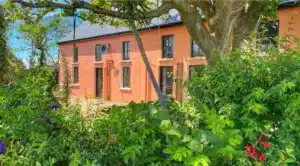
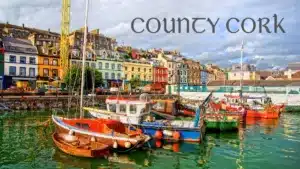
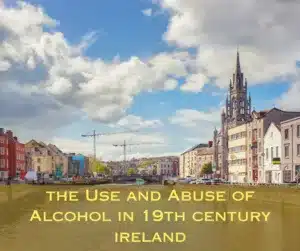

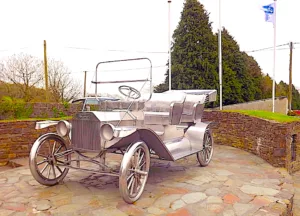

Only Plus Members can comment - Join Now
If you already have an account sign in here.